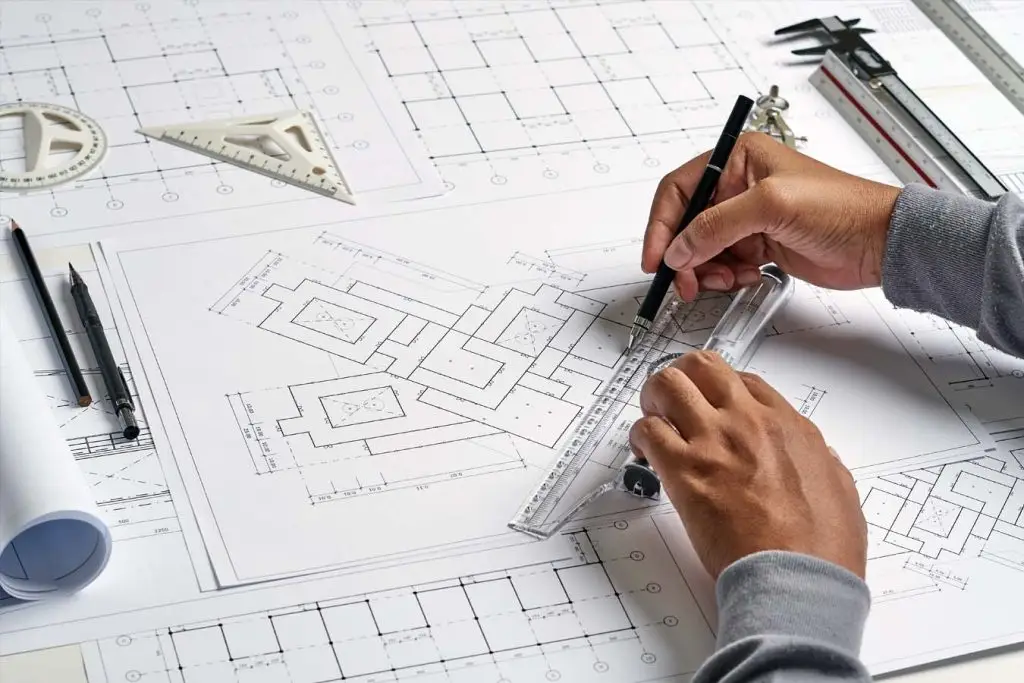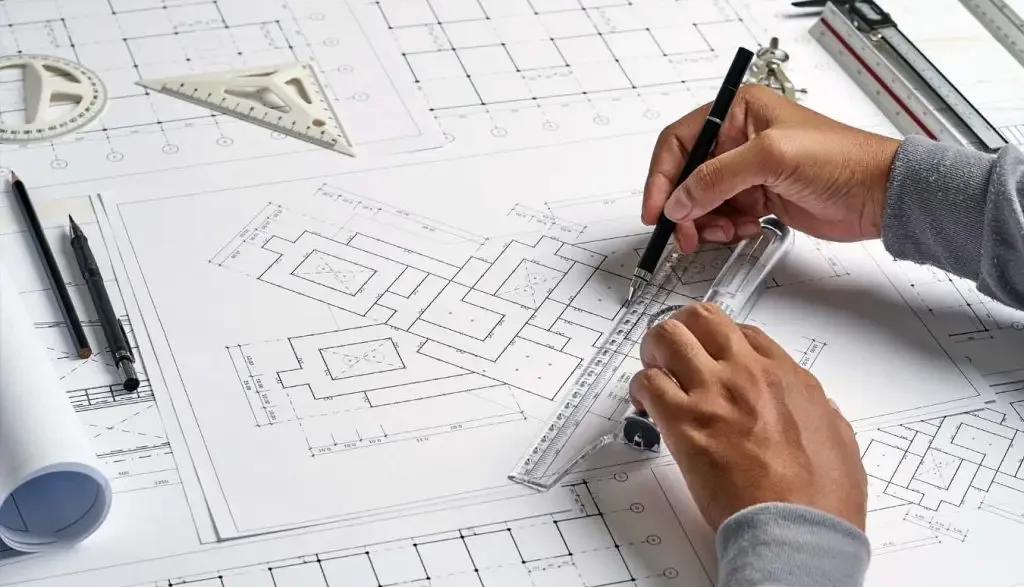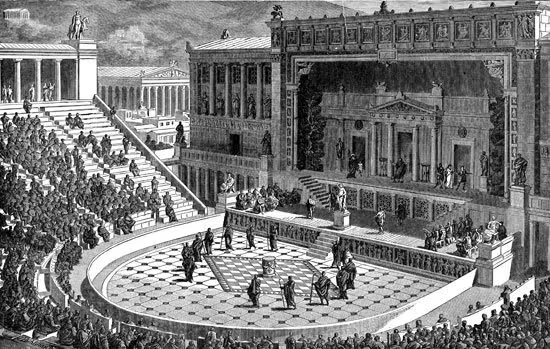In the world of drafting and design, precision is essential. One of the timeless tools for achieving this precision is the set square. This simple yet effective tool is an indispensable aid for architects, engineers, and designers. The set square is much more than just a triangular piece of plastic or wood; it has a rich history and continues to play a vital role in the drafting process by ensuring accuracy in angles and lines.

Definition and Purpose
Set squares, often called triangle rulers, are geometric tools used in drafting to create precise angles and straight lines. They are typically triangular in shape and usually have two common angles: degrees and angles. The primary purpose of a set square is to help drafters draw perpendicular lines and right angles, making it easier to bring their designs to life. Whether you are drawing plans for a new building or designing complex mechanical parts, set squares provide the reliability needed to ensure that every line drawn is accurate.
Historical Background
The origins of the square set date back to ancient civilizations. The Egyptians and Greeks used primitive tools to create right angles, but the formalization of the square as we know it today began during the Renaissance. As architects and engineers sought greater precision in their work, the need for specialized tools became apparent. By the 18th century, squares had evolved into the standardized tools we now recognize, made of materials such as wood, metal, and later plastic. Their designs have evolved over the years, but their basic function has remained the same: to help achieve geometric precision.
Importance in Drawing
The importance of squares in drawing cannot be overstated. They are essential for achieving geometric accuracy in technical drawings. In architectural design, for example, right angles are critical to structural integrity. A small miscalculation can lead to costly errors in construction. Not only do squares ensure that drawings meet exact specifications, they also help streamline the design process. By providing a reliable reference for angles, they allow drafters to focus on creativity rather than getting bogged down in mathematical calculations.
Types of Miter
While most people are familiar with standard and 60-degree adjustable squares, there are several other types that serve different purposes. For example, a 30-60 square is especially useful for technical drawings where these specific angles are required. There are also adjustable squares that offer flexibility for a variety of angles beyond the standard options. Each type is designed to meet specific drafting needs, adding to the versatility of this essential tool in a variety of design and engineering fields.
Common Materials Used
Set squares are made of a variety of materials, each with different benefits. Traditional wooden set squares were popular for their durability and ease of use. However, as technology has advanced, materials such as acrylic and aluminum have become more common. Acrylic set squares are lightweight and transparent, allowing drafters to clearly see their work underneath the tool. Aluminum offers strength and is resistant to warping. Each material contributes to the overall functionality of the set square and allows drafters to choose the best tool for their specific needs.
As a result, set squares are an enduring symbol of precision in drafting. Their historical development, practical applications, and ongoing relevance in modern design underscore their importance in the fields of architecture and engineering. As technology continues to advance, these simple yet vital tools continue to be the cornerstone of good drafting practices, bridging the gap between creativity and precision.
The Evolution of Drawing Tools
Drafting has undergone a remarkable transformation over the centuries, evolving from primitive techniques to sophisticated technological processes. This evolution reflects not only advances in tools, but also changes in design philosophies and the needs of various industries. Understanding the journey of drafting tools provides insight into how precision has become the cornerstone of architectural and engineering design.
Early Drawing Techniques
Early humans used simple methods and natural materials to draw. Our ancestors relied on primitive tools such as sticks and stones to make marks on surfaces such as clay or bark. These early methods were limited by their lack of precision, but they laid the groundwork for visual communication. As societies advanced, so did their need for more accurate representations of their ideas. For example, the Egyptians used flatteners and ropes to lay out their architectural marvels that displayed early forms of geometric principles.
As civilizations progressed, the Greeks and Romans introduced more refined techniques. In architecture in particular, they used tools such as compasses and levels to draft complex designs. The focus shifted toward accuracy and proportion, which were vital to the construction of monumental structures. These early practices emphasized the importance of a systematic approach to drafting, which would later influence the development of specialized tools.
The Emergence of the Square
The set square has emerged as a vital tool in the world of drawing, providing a solution for achieving right angles and precise measurements. Its design is simple yet effective – a triangular shape with one angle being a degree. This tool allowed draftsmen to quickly create perpendicular lines, a necessity in both architectural and engineering drawings. The introduction of this tool marked a significant leap in drawing efficiency, as it provided greater accuracy in drawings.
With the square, architects could ensure that their designs adhered to strict geometric standards, which was crucial to the strength and aesthetics of their structures. This tool, along with others such as the T-square, became a must-have in drafting rooms. Its versatility allowed for a variety of applications, from basic sketches to detailed diagrams, making it an enduring favorite among professionals.
Technological Developments
As the 20th century progressed, the landscape began to reshape with the introduction of mechanical and digital drafting tools. The traditional drawing board and set square were complemented by devices such as the drafting machine, which combined the functionality of multiple tools into one. This innovation allowed for more complex designs and faster adaptations, meeting the fast-paced demands of modern engineering.
The rise of computer-aided design (CAD) software has further revolutionized the drafting process. While many predicted that digital tools would render traditional tools obsolete, the reality has been more nuanced. Grids and other manual drafting tools still have value in educational settings, especially where they teach the fundamental concepts of geometry and design. The tactile experience of using these tools allows for a deeper understanding of spatial relationships that remain important even in the digital age.
Comparison with Other Tools
Its unique features are revealed when compared to other drawing tools such as squares, protractors, and compasses. While protractors are essential for measuring angles and compasses for drawing arcs and circles, squares are excellent at creating straight lines and right angles. This specialization makes the square indispensable in architectural drawings, where precision is crucial.
Furthermore, the simplicity of the square contrasts with some of the more complex modern tools. While CAD software offers extensive functionality, the square provides a simple approach that may be more intuitive for beginners. This balance between simplicity and precision makes the square applicable in both traditional and contemporary drafting applications.
Future Trends in Drawing Tools
Looking ahead, the future of drafting tools will likely be shaped by continued advances in technology and design philosophy. The integration of augmented reality (AR) and virtual reality (VR) into drafting processes could redefine how architects and engineers visualize their projects. These technologies promise immersive experiences that enhance the design process by enabling real-time adjustments and simulations.
Despite these technological trends, however, the precision that the square represents and the basic principles of geometry will continue to be critical. As new tools emerge, the value of understanding basic drawing techniques will continue to be emphasized. With its simplicity and efficiency, the square stands as a symbol of the precision that underlies all successful architectural endeavors. As we embrace the future, lessons learned from traditional tools like the square will guide us, ensuring that the art and science of drawing continues to evolve.
Squares, the triangular tools often found in drafting kits, have a surprisingly rich history and a variety of applications that extend far beyond simple geometry. They serve as essential tools in architecture, engineering, graphic design, education, and even modern technology. Whether you’re a student learning the basics or a professional tackling complex designs, squares are invaluable for achieving precision and accuracy.
Practical Applications of Set Squares
With their right angles and elegant edges, squares play a vital role in a variety of fields. Their simplicity belies their importance, making them a staple in many drafting environments. Let’s explore how these tools enhance creativity and precision across disciplines.
Architectural Drawing
Squares are essential in architectural drawings. Architects use them to create accurate representations of their designs, ensuring that every line and angle aligns perfectly. When drawing floor plans, elevations, or sections, the right angles provided by squares help maintain proportion and scale. This precision is vital to transforming ideas into physical structures that meet both aesthetic and functional requirements.
For example, when designing a residential property, architects often start with rough sketches. Using set squares allows them to turn these sketches into detailed plans that can be shared with clients and contractors. The ability to produce clean, precise lines ensures that everyone involved clearly understands the design intent, which is critical to effective communication and successful project execution.
Engineering Designs
Squares also find wide application in engineering. Engineers rely on these tools to develop technical drawings that convey complex ideas about machines, structures, and systems. The accuracy offered by squares is crucial for calculations and feasibility studies.
Consider a bridge design. Engineers must create detailed plans that specify every angle, dimension, and load-bearing requirement. Squares help create these diagrams and provide a reliable method for ensuring that all components fit together as intended. The precision achieved with set squares can mean the difference between a successful design and one that fails to meet safety standards or functional requirements.
Graphic Design and Illustration
In the world of graphic design and illustration, squares aren’t just for technical drawings. They’re used to create geometric shapes, align elements, and maintain symmetry in designs. Graphic designers often use squares to ensure logos, layouts, and illustrations are visually appealing and balanced.
For example, when creating a poster, a designer can use a set square to create a grid system so that the text and images are perfectly aligned. This attention to detail enhances the overall aesthetics and effectiveness of the design, making it more engaging for viewers.
Educational Uses
Square sets are invaluable tools in education, especially in teaching geometry and drawing skills. In the classroom, teachers use squares to illustrate basic concepts about angles and shapes, helping students better visualize and understand these ideas.
As students progress, they participate in projects that require drafting, such as designing models or creating technical drawings. By using squares, they learn the importance of precision and attention to detail, skills that will serve them well in future studies or careers. This foundational knowledge is essential in fields such as architecture and engineering, where accuracy is crucial.
Set Frames in Modern Technology
Even in today’s digital age, squares continue to be relevant. While software tools have revolutionized drafting, the principles of precision and accuracy remain the same. Many digital design programs include features that mimic the functionality of squares, allowing users to easily create straight lines and precise angles.
However, the tactile experience of using a physical square can enhance the design process for some individuals. The ability to manipulate the tool in real time can spark creativity and provide a better understanding of spatial relationships. In workshops and makerspaces, squares continue to be used alongside modern technology, bridging traditional techniques with contemporary practices.
Ultimately, squares are more than just basic drawing tools; they are essential tools that support accuracy and creativity in a variety of fields. Whether you are an architect, engineer, graphic designer, educator, or tech enthusiast, their enduring relevance in practice is a testament to their functionality and importance in the world of design and illustration.
Often seen as simple triangular tools, squares hold an important place in the world of drafting and design. They are essential for achieving precision in geometric construction and are widely used in architecture, engineering, and various design disciplines. Despite the rise of digital drafting tools, squares remain invaluable for their tactile simplicity and the finesse they bring to manual drafting.
Effective Usage Techniques
When using set frames in drafting, understanding a variety of techniques can greatly increase your accuracy and efficiency. Mastering both basic and advanced methods and practicing mindfulness can improve your skills and avoid common pitfalls.
Basic Techniques
There are a few basic techniques that underlie effective drawing with squares. First, it’s important to understand the basic shapes: 30-60 degree and 45-45 triangles. Each of these shapes serves a unique purpose in creating right angles and measuring slopes. When using a set square, position it against your drawing surface and align it carefully to ensure your lines are straight and your angles are precise. This simple approach will allow you to create accurate geometric shapes, which are vital in architectural plans.
Advanced Drawing Methods
As you become more comfortable with squares, you can explore advanced drawing techniques. One method involves using multiple squares together to create complex shapes or patterns. For example, combining a 30-60 gauge square with a 45-45 gauge square can make it easier to create complex roof designs or multi-faceted structures. Additionally, using a straightedge next to your gauge squares can help maintain continuous lines and increase the overall fluidity of your designs. These advanced techniques not only increase precision, but also encourage creative exploration in your drawing projects.
Tips for Beginners
A few tips for beginners can make the learning process go smoother. First, practice regularly to develop a steady hand and a keen eye for angles. Start with simple shapes and gradually work your way up to more complex designs. Pay attention to the positioning of the square; even small misalignments can lead to significant errors in your work. Also, always keep your drawing area tidy to avoid distractions and streamline your workflow. Emphasizing these basic habits will create a solid foundation for your drafting skills.
Common Mistakes to Avoid
While drawing with a square is easy, beginners often make a few common mistakes. One common mistake is neglecting to double-check measurements before making permanent marks. This oversight can lead to misaligned designs that are difficult to fix. Another mistake is applying too much pressure when drawing, which can cause your pencil to slip or create uneven lines. Also, not keeping squares clean can cause smears or dirt to spread across your drawings. By paying attention to these pitfalls, you can improve the quality of your work and achieve more professional results.
Maintenance and Repair of Set Squares
Proper maintenance is essential to ensure that squares remain effective tools. Check your squares regularly for wear and tear, checking for any chips or distortions that could affect accuracy. Cleaning with a soft cloth can help prevent dirt buildup and provide a smooth surface for drawing. Store squares in a protective case to prevent damage and keep them organized. By taking these simple steps, you can extend the life of your squares and help them maintain their accuracy and continue to produce high-quality drafts for years to come.
As a result, techniques for using squares effectively are essential to achieving precision in drafting. Whether you are a novice or experienced designer, understanding these methods and taking care of your tools can enhance your drawing practice and keep the art of hand drawing alive.
Set Frames in Action
Squares, those simple yet incredibly effective triangular tools, have been a staple in the drawing and design world for centuries. Their ability to create precise angles and straight lines makes them indispensable in a variety of contexts, from iconic architectural projects to personal creative endeavors. Let’s take a look at some fascinating case studies that show how squares are used in different areas.
Iconic Architectural Projects
Throughout history, squares have played a vital role in shaping our architectural wonders. Take the Sydney Opera House for example. While its organic forms may seem to defy traditional geometry, its early drafting stages relied heavily on set squares to define basic lines and angles. Architects used these tools to ensure that the structure’s complex curves and sails maintained structural integrity and aesthetic harmony. Similarly, the Eiffel Tower, with its intricate latticework design, utilized the precision of squares in its planning phase. These iconic structures exemplify how even the most avant-garde designs begin with simple tools that provide clarity and direction.
Innovative Engineering Solutions
In engineering, set squares are indispensable for creating precise technical drawings that form the backbone of practical solutions. Consider the design of bridges, where correct angles are crucial for stability. Engineers use set squares to prepare initial plans to ensure accurate calculations of load distributions and stress points. The Millau Viaduct in France, for example, is a testament to this meticulous planning. The height and design of the bridge required meticulous calculations, all facilitated by the basic work of the set squares. This highlights how simple tools can lead to groundbreaking engineering achievements that push the boundaries of what is possible.
Artistic Creations
Squares are not just a tool for architects and engineers; they also find a place in the hands of artists. Many contemporary artists are incorporating geometric precision into their work by using squares to create impressive compositions. The work of artists such as Piet Mondrian, known for his grid-based paintings, exemplifies the intersection of art and geometry. By using specific squares, artists can achieve balance and harmony, ensuring that their work resonates with viewers on a structural level. These artistic explorations show that precision can drive creativity and lead to innovative expressions of vision and concept.
Educational Institutions
The role of set squares in education cannot be overstated. In architecture and engineering programs worldwide, these tools are often among the first items students learn to use. They serve as a gateway to understanding geometry and design principles. For example, institutions such as the Massachusetts Institute of Technology (MIT) emphasize hands-on learning, allowing students to work with specific squares as they draft their first projects. This foundational experience provides a better understanding of spatial relationships and encourages students to explore their creativity within a structured framework. The use of set squares in education highlights their enduring importance as teaching aids that bridge theory and practice.
Designers' Personal Projects
Beyond the professional arena, many designers and hobbyists use squares for their personal projects. Whether they’re creating handcrafted furniture or designing intricate models, these tools provide the precision needed to transform ideas into tangible form. For example, a designer designing a unique shelving unit can rely on squares to ensure every angle is perfect, creating a visually appealing and functional piece. This personal relationship with squares demonstrates their versatility and their importance in encouraging creativity and innovation in everyday life. What’s more, it shows that anyone, regardless of background, can harness the power of these simple tools to bring their visions to life.
As a result, case studies of squares in action reveal their vital role in a variety of fields, from architecture and engineering to art and education. These tools, though simple in design, carry the weight of precision and creativity, making them enduring in our pursuit of both functionality and beauty in the built environment.
The Enduring Legacy of the Set Squares
Summary of Key Points
Squares have been an integral tool in the world of drawing for centuries, bridging the gap between creativity and precision. These simple yet effective tools provide the backbone of meticulous planning, allowing architects, engineers, and designers to create right angles and straight lines. As we’ve seen, their typically triangular design makes it easy to create both 90-degree and 45-degree angles, which are essential in a variety of drawing applications. Their enduring presence in both educational and professional settings underscores their value in establishing a strong foundation in design practice.
The Importance of Precision in Design
Precision in design is not just about creating aesthetically pleasing visuals; it ensures functionality, safety, and durability in structures and products. In architecture, for example, even a small miscalculation can lead to major structural failures. Set squares play a crucial role in achieving the precision required for successful results. By providing a reliable way to measure and reproduce angles, they help drafters maintain the integrity of their designs. This commitment to accuracy is essential because it improves the overall quality of the built environment and the goods produced, ultimately benefiting society at large.
Set the Frames in an Increasingly Digital World
As technology has advanced, the tools we use to draw have also evolved significantly. While computer-aided design (CAD) software has revolutionized the industry, set squares remain relevant. Many professionals still advocate for integrating traditional methods with digital applications. The tactile experience of using set squares can enhance spatial awareness and understanding of geometric principles that can be lost in purely digital workflows. Additionally, in an educational context, learning to use a set square helps students grasp basic concepts before moving on to more complex digital tools. So while squares may seem out of fashion in the digital age, they continue to play an important role in comprehensive design education and practice.
Encouraging Future Generations
Encouraging future generations to appreciate and use traditional drawing tools like the square is vital. In an age dominated by digital technology, it’s easy to overlook the fundamental skills that underpin design principles. Workshops, hands-on projects in schools, and mentoring programs can introduce young minds to the joy of drawing with squares. By encouraging an understanding of the historical significance and practical advantages of these tools, we can inspire a new wave of architects and designers who value both precision and creativity in their work.
Final Thoughts on Drawing Apps
In conclusion, the legacy of squares in drawing practice is far from over. Their simplicity speaks to their importance in teaching precision and providing a deep understanding of design principles. In an increasingly digital environment, blending traditional techniques with modern technologies can lead to richer, more informed design practices. Squares represent not just a tool, but a philosophy of precision and care that should be embraced by both aspiring and experienced professionals. Their enduring relevance is a reminder that sometimes the simplest tools can have the most profound impact on our work and the world around us.




















